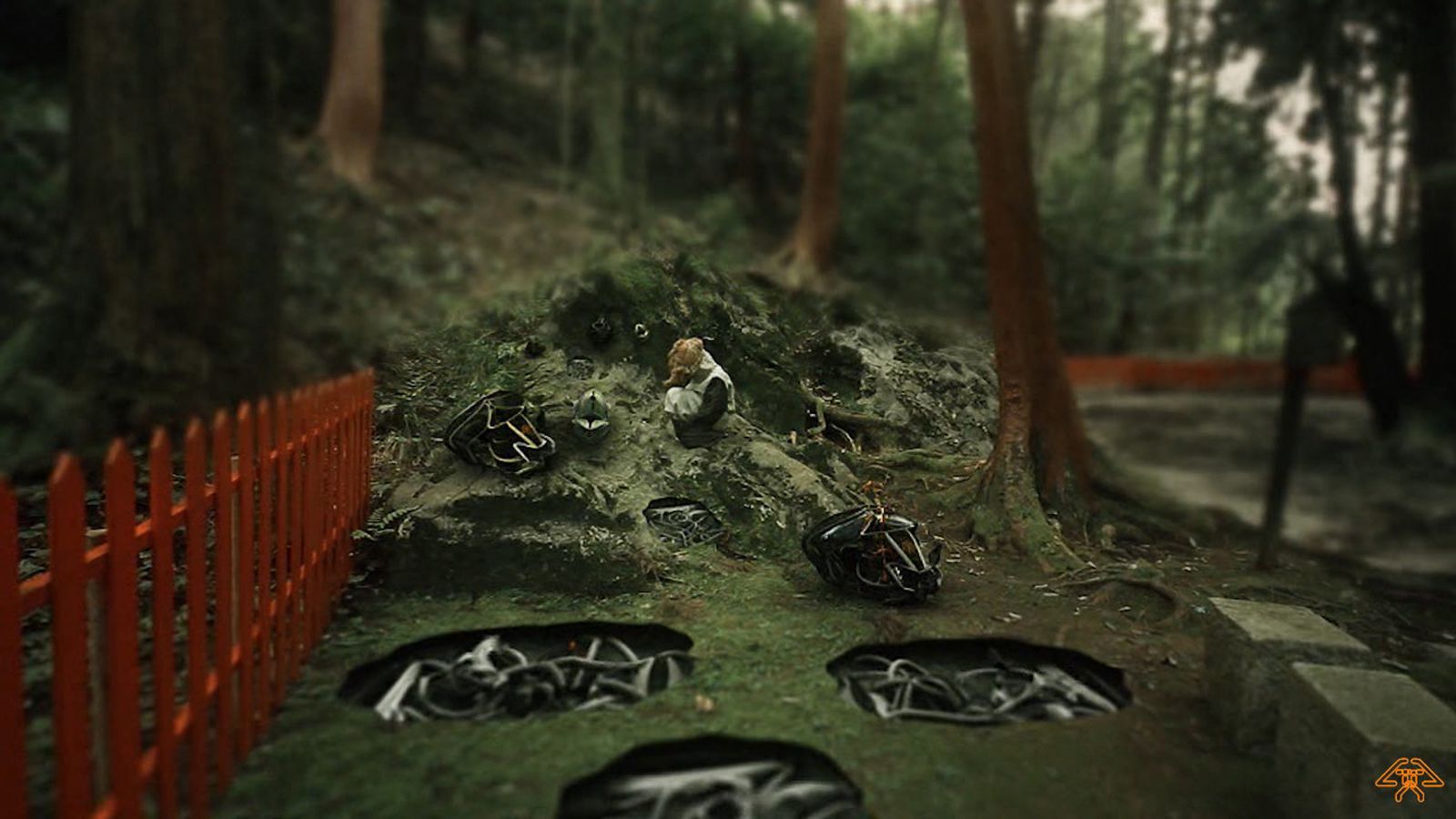
© Tudi Deligne, No title 6.4, 2011
Frankfurter Kunstverein Steinernes Haus am Römerberg Markt 44 60311 Frankfurt am Main Allemagne
« Imagine that your body is dying...Imagine how someone is closing your eyelids, » begins the meditation on death in Hannah Hurtzig’s videodyptich « Das Milieu der Toten » (The Milieu of the Dead) (2013). Towards the end of their lives people are forced to face the limitations of their bodies. However, for many people a personal confrontation with decay, disease, illness, accidents, dying, and death does not occur until late in life, if at all. Meanwhile death and dying have become increasingly topical social issues. More and more television and film documentaries examine the finite nature of life. Assisted suicide and organ transplants are topics of public debate, and research projects address the shift in attitudes towards the dead body.
The end is certain; the human body is mortal. Although the span of an average human life has increased over the course of evolution, eternal life was not intented or imaginable for the human organism. At the beginning of the 21st century, the body as we know it is poised at a threshold of radical transformation. Though biotechnical and medical developments, its vulnerability is steadily diminishing. For example, cells and DNA can be replicated artificially, and organs can be replaced. The vision of an almost endless lifespan or even immortality has come within reach. In the future it is likely that people will not have to be afraid of dying but of having to decide whether they want to die.

© Aujik (Stefan Larsson), Courtesy Frankfurter Kunstverein
Impermanence Trajectory: the limbic nest, 2013
« Death is Your Body » examines death through the lifeless body. The exhibition presents sculptures, installations, drawings, collages, photographs, and videos of 14 international artists, who use the dead body as material or as an object onto which notions about life and death are projected. The approaches vary from documentary works, which address the medial representation of the corpse in society (as in the works of Taryn Simon and Hannah Hurtzig) to metaphorical compositions, that interrogate the relationship between the living and the dead (Wangechi Mutu, Omer Fast, and Kaia Hugin) or even to works using the corpse as material (Teresa Margolles, Thomas Rentmeister, or Berlinde De Bruyckere).
The works also refer to the spheres of activity, in which people are confronted with dead bodies, represen- tations of the corpse, or notions of the undead. A number of highly relevant questions are raised in the process: for example, about what defines life and how a corpse is treated, handled, or used.
Kaia Hugin has created a striking symbolic image relating to the dynamics of life and death in her work “Motholic mobble part 3” (2009). In the video a young women slowly digs herself into the earth of a barren mountainous landscape by using spiraling movements and by exerting visible and audible effort.
The sculptures of Berlinde De Bruyckere recall the work of a preparator. With wax, epoxy, paint, and animal hides the artist realistically forms fragments of animal or human bodies; through truncated limbs or dramatic contortions the works suggest a being that has met a violent end. Her sculptures suggest pain and torture as well as the possible metamorphosis of the body, while simultaneously referring to methods of making visible the inner organs of a body. De Bruyckeres work often draws on the history of the representation of the body—imagery shaped by anatomical studies and the dissection of human and animal bodies, which reveal layer for layer the inside of the body.
The video « Looking Pretty for God (After G.W.) » (2008) by Omer Fast deals with the aesthetic norms that define both living bodies (for example, ideals of beauty) as well as attitudes towards dead bodies. Undertakers and thanatologists reflect on their daily business and about the beautification of the deceased. As make-up artists they remove traces of disease and suffering from the faces of the dead and create the illusion of a peaceful sleep. The mechanisms driving this form of “aestheticized death” are revealed in a camera pan from a funeral home to an photo shoot for children’s fashion, in which perfectly groomed children seem to be speaking the words of the interviewed untertakers while posing for the camera.

© Kaia Hugin, Motholic Mobble part 3, 2009
A comprehensive program of events, including lectures, panel discussions, and performances, accompanies the exhibition and is supported by the interdisciplinary Research Project “Death and Dead Bodies. Transmortality” (Aachen, Berlin, Marburg, Zurich).
Participating artists: AUJIK (SE/JP), Berlinde De Bruyckere (BE), Tudi Deligne (FR), Omer Fast (IL), Gosbert Gottmann (DE), Kaia Hugin (NO), Hannah Hurtzig (DE), Teresa Margolles (MX), Alexandra Meyer (CH), Jana Müller (DE), Wangechi Mutu (US/KE), Thomas Rentmeister (DE), Taryn Simon (US), Raman Zaya (IR/DE)
Curator: Lilian Engelmann
The exhibition has been made possible through the kind support of the Flemish authorities, the Office for Contemporary Art Norway, IASPIS—the Swedish Arts Grants Committee’s International Program for Visual Artist, and the Royal Norwegian Embassy, Berlin. The sculpture by Thomas Rentmeister was made possible through the support of the REWE Group.

